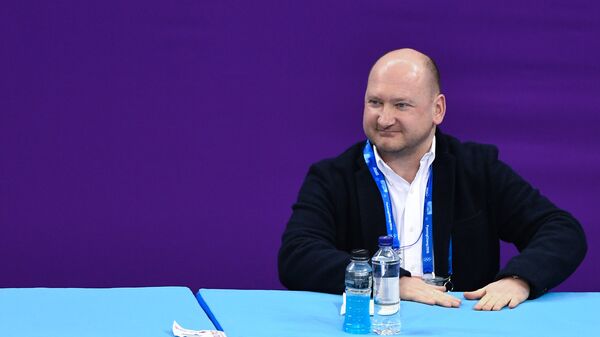There are very few skaters who jump lutz and flip equally perfect
Russian coaches Alexei Mishin, Evgeni Rukavitsin, Elena Sokolovskaya and Sergei Dudakov about flip and lutz tecnique, should they be combined into one jump.
World of figure skating mazazine #4[20]2019

Alexei Mishin: Speaking about correct execution of lutz and flip, we should point out three factors. The first is preparation of the athlete. An athlete, while learning toe-pick jumps, should clearly understand what is forward-outside, forward-inside, backward-outside, backward-inside, and be able to do all these skating options. The second point is very important, it is coach’s exactingness in learning elements. Third, but no less important – individual characteristics of the athlete.
Very often, a skater jumps easily. Wrong edges on lutz and flip are often happen when skaters perform these jumps at the beginning of their career, following the ambitious plans of the coaches. Studying in any field of activity, be it science, art or sports, the first steps are important. They are the most capacious in terms of obtaining and undertanding information.
Actually, I really like the idea of combining lutz and flip. Repeatedly at different levels of ISU I suggested combining these jumps and allowing them to be performed twice in a free program. This proposal had both supporters and opponents who categorically did not accept this idea. Today, viewers can’t tell them apart, and judges distinguish the right edges on lutz and flip with great difficulty. As a result, we have such collisions: champions have all correct edges, but if the skater drops to the second position, his edges become wrong. There is pure voluntarism.

Evgeni Rukavitsin: The correct technique of these jumps is laid at the elementary level. This, first of all, is the correctness of the turns: counter back ouside if we are talking about lutz. Three turn back inside, if we’re talking about flip. When a skater begins to grow, the technique may break. Therefore, there must be a very strict coaching control.
Now attention to this topic has increased. Previously, no one examined the edges in a microscope. Now they’re watching. In my opinion, there is no such jump as “flutz” and God forbid it suddenly appears. I believe that lutz and flip should be saved as different jumps. Even with a large number of turns it’s real to execute them correctly. With the correct basic technique, the edge is kept even for triple and quad jumps, since at the moment of take off, skater uses various other resources to get acceleration.

Svetlana Sokolovskaya: Of course, the base is the main thing. Everything is laid at the initial level. But when you start learning quadruples, everything is very individual. Sasha Samarin, for example, was well trained in both lutz and flip. But, when we began to train quad flip, small nuances appeared, and we’re working on their correction. There were no such problems with lutz. Well, and he performs a triple flip perfectly.
Any coach in his work, first of all, starts from the rules. Therefore, while there are such jumps as lutz and flip, our task is to teach athletes. But in this small “door” that they find on these jumps – everything is so subtle there … My opinion: let be both of these jumps. Just, when the wrong edge is obvious, it is necessary to punish, and when there’s a doubt, they should judge in favor of the athlete.

Sergei Dudakov: I am for the classic version of lutz and flip. For me the textbook examples if quad lutzes are Nathan Chen, Yuzuru Hanyu, Misha Kolyada … The question of edges is difficult, there is a lot of debate on this topic, it is not clear yet in what direction figure skating will develop further on this issue. Perhaps we should discussing the criteria for evaluating these jumps at the level of ISU technical committee and find some solution.
For example, there is such a tendency: if the skater has the correct edge on lutz, then most likely he will fall on the outside edge on the flip also. There are very few skaters who are jump lutz and flip equally perfect.
We try to teach athletes properly at the initial stage. But there are so many nuances. Even the structure of the legs affects the right-wrong edge. It happens that from the beginning the ankles are already slightly inward or vice versa, the child steps on the outside part of the foot while walking – so we have to take into account physiological characteristics and biomechanics of each skater. Especially when it comes to quadruple jumps, quads are a completely different story.
In my opinion, it’s more difficult for girls to jump quadruples, compared to men. They have a different jump height. We will work on pure edges.
Related topics: Alexei Mishin, Evgeni Rukavitsin, Sergei Dudakov, Svetlana Sokolovskaya

Leave a Reply